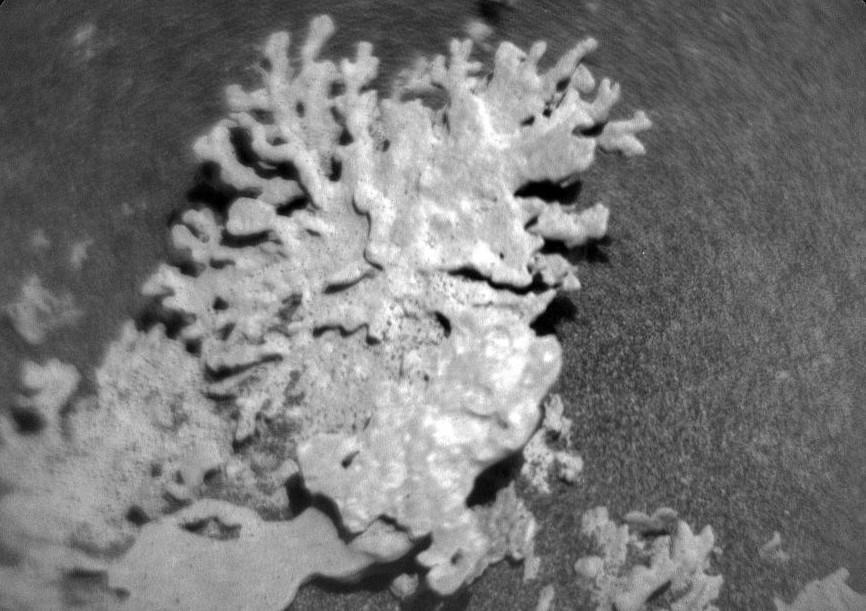
Coral-shaped rock spotted on Mars, NASA shares pic
NASA’s Curiosity Mars rover has sent back some astonishing images from the Martian surface, and this time, it’s a rock that’s got everyone talking. The rover, which has been exploring Mars since 2012, has discovered a rock that bears an uncanny resemblance to a piece of coral. The rock was found in the Gale Crater, a large impact basin on Mars, and according to NASA, it’s believed to be a whopping billion years old.
The image, shared by NASA’s Jet Propulsion Laboratory (JPL), shows the rock in black and white, with its intricate details and textures on full display. The rock’s shape is unmistakable – it’s a perfect replica of a coral reef, complete with ridges, crevices, and even what appears to be a central “core”. The resemblance is so striking that it’s hard not to imagine a Martian ocean surrounding this rock, teeming with life.
But, of course, there’s no ocean on Mars. At least, not anymore. The planet’s atmosphere is too thin to support liquid water, and the temperatures are far too extreme. So, what could this coral-shaped rock be?
According to NASA, the rock is likely the result of geological processes that occurred on Mars long ago. The Gale Crater, where the rock was found, is a vast impact basin that was formed around 3.5 billion years ago when a massive asteroid struck the planet. Over time, the crater filled with sediment and water, and the Martian surface continued to evolve.
It’s believed that the coral-shaped rock is the result of the interaction between water and minerals in the Martian soil. Water, even in small amounts, can play a crucial role in shaping the Martian surface, and it’s possible that this rock was formed when water flowed through the Gale Crater and deposited minerals on the surface.
The discovery of this coral-shaped rock is significant for several reasons. Firstly, it provides further evidence of the complex geological history of Mars, and the ways in which water has shaped the planet’s surface over billions of years. Secondly, it highlights the importance of continued exploration and research on Mars, as there’s still so much to learn about this fascinating planet.
The Curiosity rover, which has been operating on Mars for over nine years, has provided a wealth of information about the planet’s geology, climate, and potential habitability. The rover is equipped with a range of scientific instruments, including cameras, spectrometers, and sample analysis tools, which allow scientists to study the Martian surface in unprecedented detail.
The discovery of this coral-shaped rock is just the latest in a long line of exciting discoveries made by the Curiosity rover. From the detection of ancient lakes and rivers to the discovery of methane in the Martian atmosphere, the rover has provided a wealth of insights into the planet’s past and present.
As we continue to explore Mars and uncover its secrets, we’re reminded of the awe-inspiring beauty and complexity of our solar system. From the swirling clouds of Jupiter to the towering mountains of Olympus Mons, Mars is a planet that continues to fascinate and inspire us.
And who knows? Maybe one day, we’ll find evidence of life on Mars, and the coral-shaped rock will become an important part of that story. Until then, we’ll continue to explore, to discover, and to marvel at the wonders of the Red Planet.
Source: https://www.jpl.nasa.gov/images/pia26634-curiositys-chemcam-views-a-rock-shaped-like-coral/






